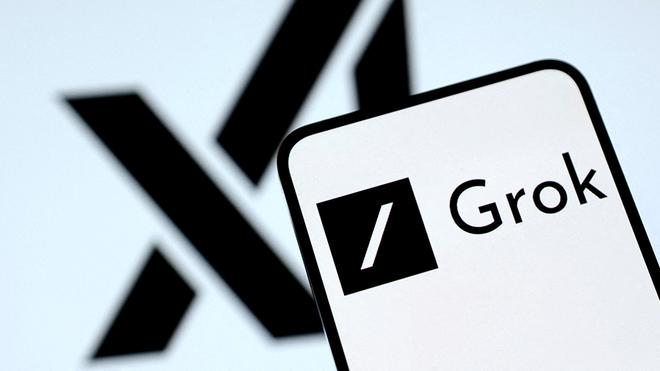Who gains if TikTok is banned in the US? | Explained Premium
TikTok and ByteDance sued the U.S. government in response, claiming that the law violates Americans’ right to free speech and that Congress is singling out one platform, “with one set of rules for one named platform, and another set of rules for everyone else,” according to the companies’ legal petition dated May 7.
TikTok was banned in India in June 2020 after deadly clashes between Chinese and Indian soldiers near a contested border region. However, rival tech platforms didn’t waste any time in trying to fill up the void. In September, YouTube introduced an early beta of YouTube Shorts in India.
While the exact India-centric data points are not available, the average daily views of YouTube Shorts grew by over 120% in India year-on-year (as of July 2023), while the average daily logged-in viewers of YouTube Shorts grew by over 30% year-on-year in India (as of July 2023), the company shared with The Hindu.
Meanwhile, Meta announced in July 2020 that Instagram Reels would be coming to India. The social media giant has periodically hailed India’s community of content creators and brands earning their revenue through Reels.
However, Meta declined to provide India-related statistics showing the adoption of Reels in India.
Apart from this, U.S. politicians believe TikTok could be used to influence the way Americans think about larger geopolitical conflicts and issues.
For example, since Hamas’s October 7 rampage and Israel’s retaliatory bombing of Palestinians, TikTok has faced accusations of promoting pro-Palestinian viewpoints and hashtags. The accusations were so strong that the company shared statistics and published a statement on November 13 last year, stressing its neutrality and pointing out similar occurrences across other social media platforms.
TikTok put out a statement defending itself against accusations of promoting pro-Palestinian viewpoints | Photo Credit: TikTok
According to TikTok and ByteDance’s legal filing on May 7, a large part of the app’s success is thanks to its video recommendation engine and the source code powering it. This was developed by China-based ByteDance engineers and then customised for use in different markets, explained TikTok in its filing.
Sanket Shah, co-founder and CEO at Invideo AI, told The Hindu that AI played a crucial role in shaping a user’s experience on platforms like TikTok and Instagram.
“Through sophisticated algorithms analysing user interactions, content attributes, and demographic data, these platforms deliver tailored content experiences, fostering increased user engagement and prolonged platform usage,” said Shah.
The rise of Generative AI technology could take social media algorithms and targeted advertising to entirely new heights.
“Generative AI introduces a new dimension, empowering users with personalized content creation capabilities and tackling issues such as content overload and algorithmic biases. This convergence of AI technologies not only enhances the social media experience but also drives significant revenue growth within the social media advertising market. These platforms share a common goal for AI: keeping users engaged on their platform,” explained Shah.
TikTok rivals have not missed out on these technologies either.
In April, Meta CEO Mark Zuckerberg pointed to the integration of AI across the social media company’s platforms, including Reels. One significant result of this was a rise in user engagement that was powered by shorter videos.
“On Instagram, Reels and video continue to drive engagement, with Reels alone now making up 50% of the time that’s spent within the app,” he said.
Zuckerberg further noted in the call that Gen AI image expansion tools had been earlier rolled out across Facebook and Instagram Reels, with small businesses adopting them.
YouTube Shorts uses AI in its algorithm as well, measuring metrics such as clicks, watch-time, survey responses, sharing, likes, and dislikes. The systems learns from over 80 billion signals every day to match videos and users, YouTube told The Hindu.
The company also said that Gen AI-powered features were coming to Shorts, in order to encourage more creators. These include AI-generated image or video backgrounds based on text prompts, and the ability to edit/remix existing videos by typing in ideas.
Meanwhile, during the Google I/O developers’ conference in May, the YouTube-parent announced Veo - its “most capable video generation model yet.”
“We’ll also bring some of Veo’s capabilities to YouTube Shorts and other products in the future,” noted Google in a blog post.
For now, the answer seems to be a firm no.
“The “qualified divestiture” demanded by the Act to allow TikTok to continue operating in the United States is simply not possible: not commercially, not technologically, not legally,” said TikTok and ByteDance in their legal filing.
Numerous legal proceedings and extensions could also delay the 2025 divestment deadline.
Like TikTok, both YouTube-parent Google and Instagram-parent Meta have attracted the U.S. government’s ire due to their approach to user privacy and their potentially addictive video offerings. But because they are American companies, founders and top executives face far fewer questions about their national loyalties and their citizenship status.

























